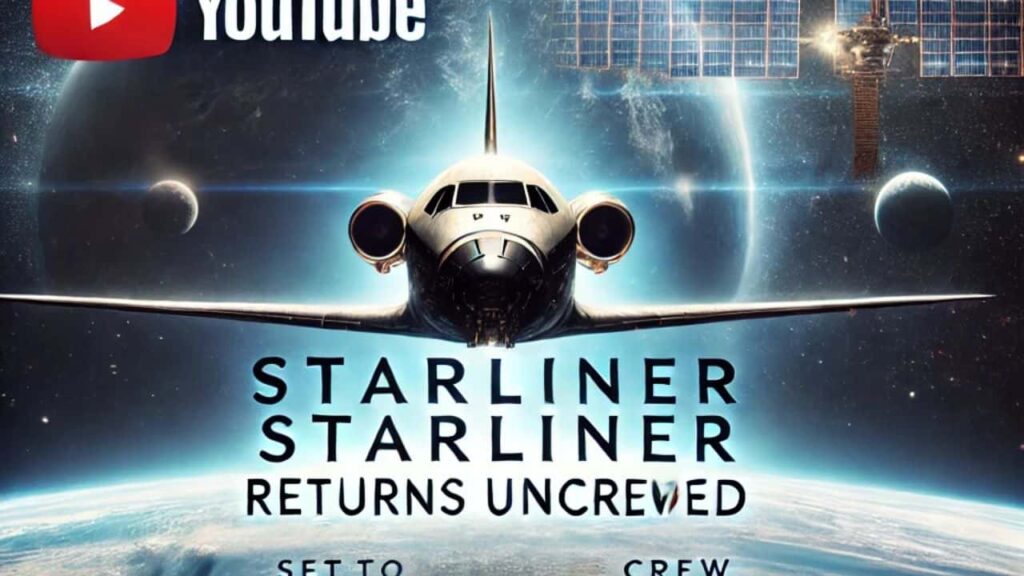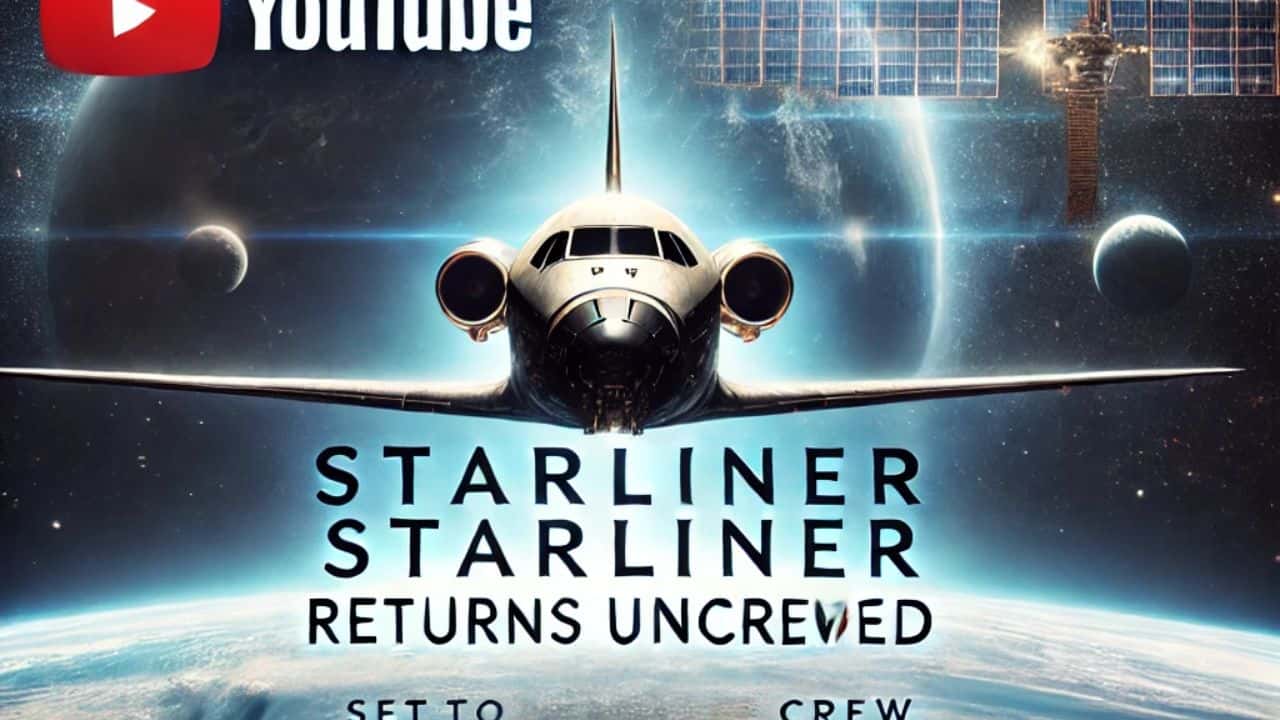Boeing Starliner, NASA Commercial Crew Program, uncrewed spacecraft return, ISS mission, Sunita Williams, space exploration, spacecraft landing, Starliner re-entry, Boeing space mission, NASA safety protocols
Explore Boeing Starliner’s upcoming uncrewed return to Earth, a crucial mission for NASA’s Commercial Crew Program. Learn about the technical challenges, safety measures, and future implications for space exploration as the spacecraft undergoes rigorous testing before future crewed missions.

Background: The Journey of the Starliner
The Boeing Starliner was developed as part of NASA’s Commercial Crew Program, an initiative launched to reinvigorate the United States’ capability to send astronauts to space from American soil. After the retirement of the Space Shuttle program in 2011, NASA became dependent on Russian Soyuz spacecraft for ferrying astronauts to the International Space Station (ISS). To reduce this dependency and stimulate the domestic aerospace industry, NASA awarded contracts to Boeing and SpaceX to develop spacecraft capable of safely transporting astronauts to and from the ISS.
Boeing’s Starliner spacecraft is set to return to Earth next week, marking a critical moment in the ongoing development and testing of this spacecraft designed for NASA’s Commercial Crew Program. This mission is particularly significant as it will be an uncrewed return, a decision made after careful consideration of various technical challenges that have arisen during the spacecraft’s time in orbit.
While SpaceX’s Crew Dragon has successfully completed multiple crewed missions, Boeing’s Starliner has encountered several significant hurdles that have delayed its progress. The first major setback occurred during the Orbital Flight Test (OFT-1) in December 2019. The mission, intended as an uncrewed test flight, ended prematurely due to a software issue that caused the spacecraft to miss its rendezvous with the ISS and return to Earth without completing its primary objectives.
Technical Challenges and Program Delays
Following OFT-1, Boeing and NASA undertook extensive reviews and made necessary corrections to the spacecraft’s systems. A second uncrewed test flight, OFT-2, was conducted in May 2022, during which the Starliner successfully docked with the ISS. However, this mission also highlighted ongoing challenges, particularly with the spacecraft’s valves and thrusters, which required further investigation and remediation.
In the latest mission, which was supposed to bring astronauts Butch Wilmore and Sunita Williams back to Earth, additional technical issues arose. Concerns about the spacecraft’s thrusters and other critical systems prompted NASA and Boeing to opt for an uncrewed return, prioritizing the safety of the astronauts and the integrity of the mission.
The Uncrewed Return: A Critical Test
The decision to return the Starliner uncrewed underscores the cautious approach being taken by NASA and Boeing. This uncrewed mission will allow for thorough testing of the spacecraft’s systems during re-entry and landing, without the risk associated with having astronauts on board. The data collected from this mission will be invaluable for identifying any remaining issues that need to be addressed before the spacecraft can be certified for regular crewed missions.
The uncrewed return is scheduled for early September. The Starliner will undock from the ISS and begin its descent to Earth, re-entering the atmosphere at high speeds. This re-entry phase is one of the most critical parts of the mission, as the spacecraft’s heat shield will need to protect it from the extreme temperatures generated during re-entry. If the heat shield and other systems perform as expected, the Starliner will deploy its parachutes and make a controlled landing in the western United States .
Implications for Boeing and NASA
The success of this uncrewed mission is crucial for Boeing. The company has invested heavily in the Starliner, viewing it as a key part of its future in space exploration. However, the program has faced significant scrutiny due to the delays and technical issues that have plagued its development. A successful uncrewed return would help restore confidence in the Starliner and demonstrate that Boeing can meet NASA’s rigorous standards for crewed spaceflight.
For NASA, the Starliner is an important part of its broader strategy to maintain a continuous human presence in low Earth orbit and eventually extend human exploration to the Moon and Mars. Having two operational spacecraft—the Starliner and SpaceX’s Crew Dragon—provides redundancy, ensuring that astronauts can be transported to and from the ISS even if one spacecraft encounters problems. This redundancy is also vital for the long-term sustainability of human space exploration, particularly as NASA prepares for more ambitious missions under its Artemis program.
The Future of the Starliner Program
Assuming the upcoming uncrewed return is successful, the next steps for the Starliner program will involve further testing and refinement. Boeing will need to address any issues identified during this mission and demonstrate that the spacecraft is ready for crewed flights. The first operational crewed mission could take place as early as 2025, depending on the outcome of this mission and subsequent assessments by NASA.
Boeing is committed to making the necessary investments to ensure the Starliner meets NASA’s requirements. The company has already begun work on additional Starliner capsules, with the goal of supporting NASA’s ongoing needs for crewed missions to the ISS and potentially other destinations in space. This long-term commitment reflects Boeing’s belief in the importance of the Starliner program for both the company’s future and the future of human space exploration.
Conclusion
The upcoming return of Boeing’s Starliner spacecraft to Earth without a crew is a pivotal moment in the program’s development. It reflects the challenges inherent in developing a new spacecraft capable of safely transporting humans to and from space. While the Starliner has faced significant setbacks, its successful return could pave the way for future crewed missions, bringing NASA and Boeing one step closer to realizing their shared goals in space exploration.
As the aerospace community closely watches this mission, its outcome will have far-reaching implications for both Boeing and NASA. A successful return would not only validate the extensive work and investments made over the past several years but also solidify Boeing’s role as a key player in NASA’s Commercial Crew Program and beyond. The mission will be a critical test of the Starliner’s capabilities and a major milestone in the journey towards regular crewed flights to the ISS and future destinations in space.
Read More
